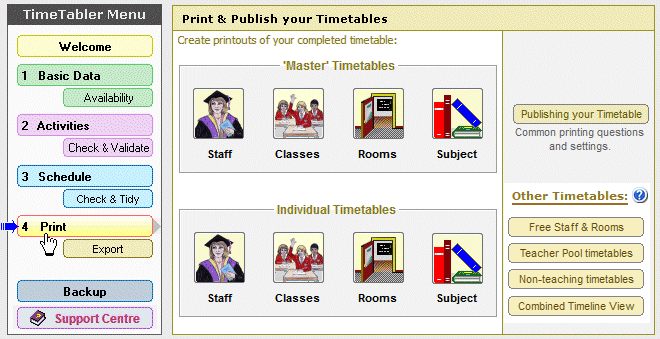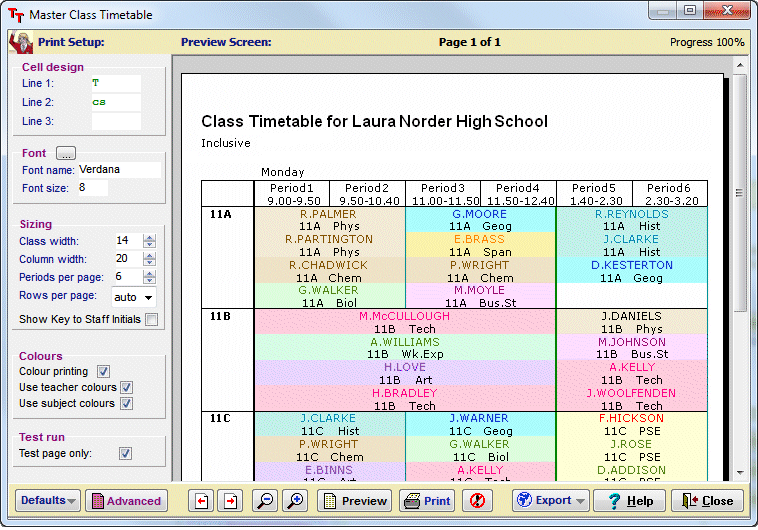Zarraga’s Rule
One of the limitations on your timetable is the way in which the Teacher-teams of the Upper School interact with the ‘pure class’ activities of the Lower School.
Zarraga’s Rule can help you to reduce the interaction and find more flexibility for your scheduling.
The formal statement of Zarraga ‘s Rule is given below, after an example to explain the principle.
For example, here is a Teacher-team in Year 10, consisting of 4 teachers called AA, BB, CC and DD:
| Monday… Tuesday… Wednesday… | ||||
|
These 4 teachers are due to teach Year 10 all at the same time, in parallel.
It might be an Option Block or a column of Maths ‘sets’.
For example, on Monday-period-1.
It may happen, by chance, that Heads of Department request the same 4 teachers to all teach the same Lower School class, say 7A.
| Monday… Tuesday… Wednesday… | |||||
|
In this case these same 4 teachers are due to teach 7A at different times, in series.
This situation can lead to serious difficulties in scheduling.
Suppose for example that after you have scheduled Year 10, you eventually come to schedule class 7A and look for a teacher to teach them on Monday-period-1.
You may find that teacher AA is not free, because he is teaching in the Year 10 team (above).
If you then try to schedule teacher BB with 7A, you find he is also not free — he is also teaching in the Year 10 team.
Similarly with teachers CC and DD.
If all the other teachers needed for 7A are not free, because they have been scheduled with other classes or are unavailable part-timers, then you are in difficulty.
The class is available, the room is available, the time-slot is available, but none of the teachers is free !
And if you have reduced the number of staff teaching in Year 7 (eg. to try to emulate a primary school ethos, so that you have perhaps only 5 teachers for each class instead of the more traditional dozen) …then the situation will be even more difficult !
The solution:
Clearly this situation is less likely to arise if the 4 teachers who are in parallel in Year 10 are not put in series for the same Lower School class.
Unless there is a good educational reason against it, the 4 teachers should be allocated to 4 different Year 7 classes. For example:
| Monday… Tuesday… Wednesday… | ||||||||||||||||||||
|
Applying this principle can lead to a surprising increase in flexibility in the later stages of scheduling.
How to find which of your teacher teams might cause this difficulty:
| You can do it by analysing all your teacher-teams, one by one …but it is much easier to get a computer program to do it. In Keith Johnson’s TimeTabler program, just go to Activities->Analyses and just click on the button labelled Zarraga’s Rule. |
|
Zarraga’s Rule:
“As far as possible, teachers who are members of the same teacher-team in one part of the school should be allocated to different classes for pure class activities in another part of the school.”


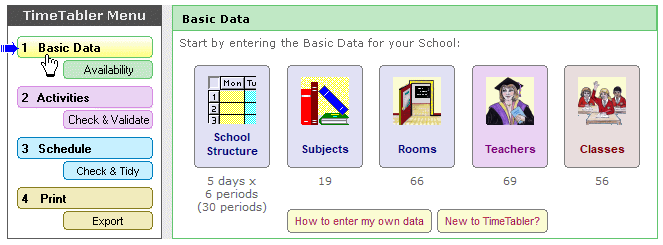
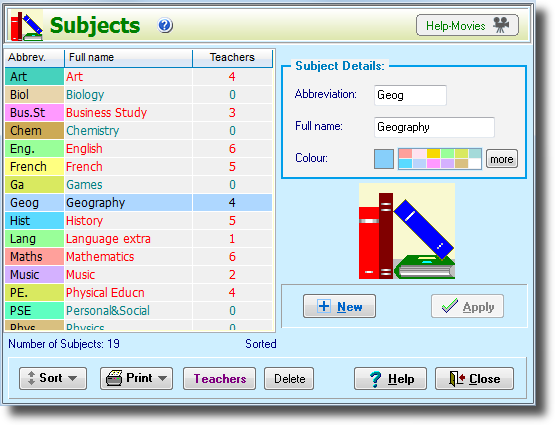
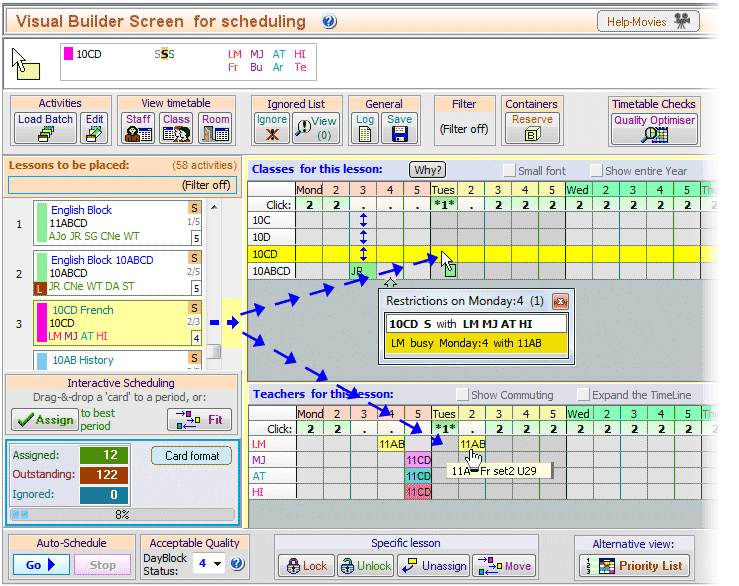

 button.
button.